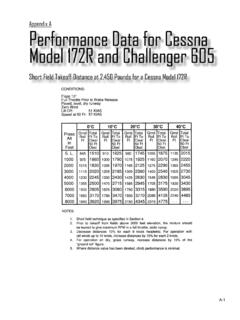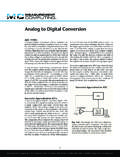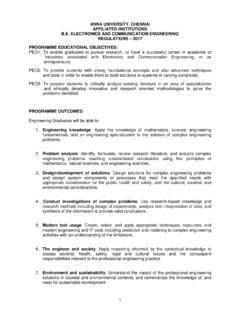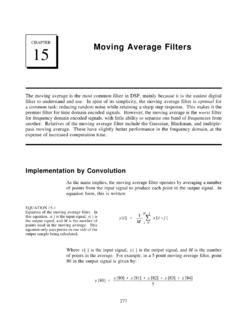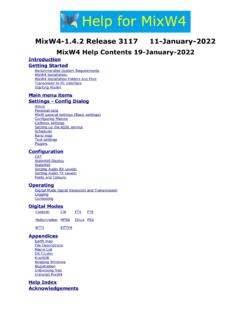Transcription of RF and Microwave Power Amplifier Design
1 RF and MicrowavePower AmplifierDesignAndrei GrebennikovM/A-COM, IrelandMcGraw-HillNew York Chicago San Francisco Lisbon LondonMadrid Mexico City Milan New Delhi San JuanSeoul Singapore Sydney TorontoiLibrary of Congress Cataloging-in-Publication DataGrebennikov, Andrei, and Microwave Power Amplifier Design / Andrei bibliographical references and 0-07-144493-9 (alk. paper)1. Power amplifiers. 2. Microwave amplifiers. I. 5 dc222004057908 Copyrightc 2005 by The McGraw-Hill Companies, Inc. All rights re-served. Printed in the United States of America. Except as permittedunder the United States Copyright Act of 1976, no part of this publi-cation may be reproduced or distributed in any form or by any means,or stored in a data base or retrieval system, without the prior writtenpermission of the 0-07-144493-9 Thesponsoring editor for this book was Stephen S.
2 Chapman and the pro-duction supervisor was Sherri Souffrance. It was set in Century School-book by International Typesetting and Composition. The art director forthe cover was Handel and bound by RR books are available at special quantity discounts to use aspremiums and sales promotions, or for use in corporate training pro-grams. For more information, please write to the Director of SpecialSales, McGraw-Hill Professional, Two Penn Plaza, New York, NY 10121-2298. Or contact your local book is printed on recycled, acid-free papercontaining a minimum of 50% recycled, contained in this work has been obtained by TheMcGraw-Hill Companies, Inc. ( McGraw-Hill ) from sourcesbelieved to be reliable. However, neither McGraw-Hill nor itsauthors guarantee the accuracy or completeness of any informa-tion published herein, and neither McGraw-Hill nor its authorsshall be responsible for any errors, omissions, or damages aris-ing out of use of this information.
3 This work is published withthe understanding that McGraw-Hill and its authors are sup-plying information but are not attempting to render engineer-ing or other professional services. If such services are required,the assistance of an appropriate professional should be 1. Two-Port Network Parameters1 Traditional Network Parameters1 Scattering Parameters5 Conversions between Two-Port Parameters8 Interconnection of Two-Port Networks12 Practical Two-Port Circuits15 Single-element networks15 -andT-networks16 Three-Port Network with Common Terminal19 Transmission Line21 Chapter 2. Nonlinear Circuit Design Methods27 Spectral Domain Analysis27 Trigonometric identities28 Piecewise-linear approximation29 Bessel functions33 Time Domain Analysis35 Newton-Raphson Algorithm42 Quasilinear Method45 Harmonic Balance Method48 Chapter 3. Nonlinear Active Device Modeling53 Power MOSFETs54 Small-signal equivalent circuit54 Determination of equivalent circuit elements58 Nonlinear I-V models61 Nonlinear C-V models66 Charge conservation73 Gate-source resistance74 Temperature dependence74iiiivContentsGaAs MESFETs and HEMTs77 Small-signal equivalent circuit77 Determination of equivalent circuit elements79 Curtice quadratic nonlinear model83 Curtice-Ettenberg cubic nonlinear model84 Materka-Kacprzak nonlinear model85 Raytheon (Statz et al.)
4 Nonlinear model86 TriQuint nonlinear model90 Chalmers (Angelov) nonlinear model91 IAF (Berroth) nonlinear model94 Model selection95 BJTs and HBTs96 Small-signal equivalent circuit96 Determination of equivalent circuit elements97 Equivalence of intrinsic -circuit and T-circuit topologies100 Nonlinear bipolar device modeling102 Chapter 4. Impedance Matching109 Main Principles109 Smith Chart112 Matching with Lumped Elements117 Bipolar UHF Power amplifier124 MOSFET VHF high- Power amplifier129 Matching with Transmission Lines131 Narrow-band Power Amplifier design140 Broadband high- Power Amplifier design142 Types of Transmission Line145 Coaxial line145 Stripline146 Microstrip line149 Slotline151 Coplanar waveguide153 Chapter 5. Power Combiners, Impedance Transformersand Directional Couplers155 Basic Properties155 Three-Port Networks156 Four-Port Networks157 Coaxial Cable Transformers and Combiners159 Wilkinson Power Divider168 Microwave Hybrids175 Coupled- line Directional Couplers182 Chapter 6.
5 Power Amplifier Design Fundamentals189 Main Characteristics190 Gain and Stability195 Stabilization Circuit Technique198 Frequency domains of BJT potential instability198 Frequency domains of MOSFET potential instability204 Some examples of stabilization circuits208 ContentsvLinearity212 Basic Classes of Operation: A, AB, B and C219DC Biasing228 Push-Pull Amplifiers234 Practical Aspect of RF and Microwave Power Amplifiers239 Chapter 7. High Efficiency Power Amplifier Design247 Overdriven Class B247 Class F Circuit Design250 Inverse Class F264 Class E with Shunt Capacitance271 Class E with Parallel Circuit279 Class E with Transmission Lines286 Broadband Class E Circuit Design299 Practical High Efficiency RF and Microwave Power Amplifiers305 Chapter 8. Broadband Power Amplifiers315 Bode-Fano Criterion316 Matching Networks with Lumped Elements318 Matching Networks with Mixed Lumped and Distributed Elements327 Matching Networks with Transmission Lines330 Lossy Matching Circuits339 Practical Design Aspect343 Chapter 9.
6 Power Amplifier Design for Communication Systems355 Kahn Envelope Elimination and Restoration Technique356 Envelope Tracking361 Outphasing Power Amplifiers365 Doherty Power Amplifier Architecture372 Switched-Mode and Dual-Path Power Amplifiers381 Feedforward Linearizing Technique389 Predistortion Linearization392 Monolithic CMOS and HBT Power Amplifiers for Handset Application397 Index413viPrefaceThe main objective of this book is to present all the relevant informa-tion required for RF and micro-wave Power Amplifier Design includingwell-known and novel theoretical approaches and practical Design tech-niques as well as to suggest optimum Design approaches effectively com-bining analytical calculations and computer-aided Design . This bookcan also be very useful for lecturing to promote the analytical way ofthinking with practical verification by making a bridge between theoryand practice of RF and Microwave engineering.
7 As it often happens, anew result is the well-forgotten old one. Therefore, the demonstrationof not only new results based on new technologies or circuit schematicsis given, but some sufficiently old ideas or approaches are also intro-duced, that could be very useful in modern practice or could contributeto appearance of new ideas or schematic a result, this book is intended for and can be recommended to: University-level professors and scientists, as possible reference andwell-founded material for creative research and teaching activitythat will contribute to strong background for graduate and postgrad-uate students R&D staff, to combine the theoretical analysis and practical aspectincluding computer-aided Design and to provide a sufficient basis fornew ideas in theory and practical circuit technique Practicing RF designers and engineers, as an anthology of many well-known and new practical RF and Microwave Power Amplifier circuitswith detailed description of their operational principles and applica-tions and clear practical demonstration of theoretical resultsIn Chapter 1, the two-port networks are introduced to describe thebehavior of linear and nonlinear circuits.
8 To characterize the nonlin-ear properties of the bipolar orfield-effect transistors, their equivalentcircuit elements are expressed through the impedanceZ-parameters,admittanceY-parame ters, or hybridH-parameters. On the other hand,viiviiiPrefacethe transmissionABCD-parameters are very important in the designof the distributed circuits as a transmission line or cascaded elements,whereas the scatteringS-parameters are widely used to simplify a mea-surement main purpose of Chapter 2 is to present widely used nonlinear cir-cuit Design techniques to analyze nonlinear Power Amplifier circuits. Ingeneral, there are several approaches to analyze and Design these non-linear circuits, depending on their main specifications for example,an analysis in time domain when it is necessary to determine the tran-sient circuit behavior or in frequency domain to provide improvement ofthe Power and spectral performances when both parasitic effects suchas instability and spurious effects must be eliminated or the time-domain technique it is quite easy to describe the circuitby differential equations, whereas frequency-domain analysis is moreexplicit when a relatively complex circuit can be reduced to one or moresets of immitances at each harmonic Chapter 3, all the necessary steps to provide an accurate devicemodeling procedure starting with the determination of the small-signalequivalent circuit parameters are described and discussed.
9 A varietyof nonlinear models for MOSFET, MESFET, HEMT, and bipolar de-vices including HBTs, which are very prospective for modern microwavemonolithic integrated circuits of Power amplifiers and oscillators, arepresented. In order to highlight the advantages or drawbacks of onenonlinear device model over the other, a comparison of the measuredand modeled volt-ampere and voltage-capacitance characteristics or afrequency range of model application is concept of impedance matching and the impedance-matching tech-nique, which is very important when designing Power amplifiers, ispresented in Chapter 4. First, the main principles and impedance-matching tools such as the Smith chart are described, giving the start-ing point of the matching- Design procedure. As an engineering solutionin general depends on the different circuit requirements, the designershould choose the optimum solution among a variety of the matchingnetworks including either lumped elements or transmission lines orboth of them.
10 To simplify and visualize the matching- Design procedure,an analytical approach, which allows calculating the parameters of thematching circuits using simple equations, and Smith chart traces isdiscussed and illustrated with several examples of the narrowbandand broadband RF and Microwave Power amplifiers using bipolar orMOSFET devices. Finally, the Design formulas and curves are presentedfor different types of transmission lines including stripline, microstripline, slotline, and coplanar 5 describes the basic properties of three-port and four-portnetworks as well as a variety of different combiners, transformers, andPrefaceixdirectional couplers for RF and Microwave Power applications. So, forpower combining in view of insufficient Power performance of the ac-tive devices, it is best to use the coaxial cable combiners with ferritecore to combine the output powers of RF Power amplifiers intended forwideband applications.
